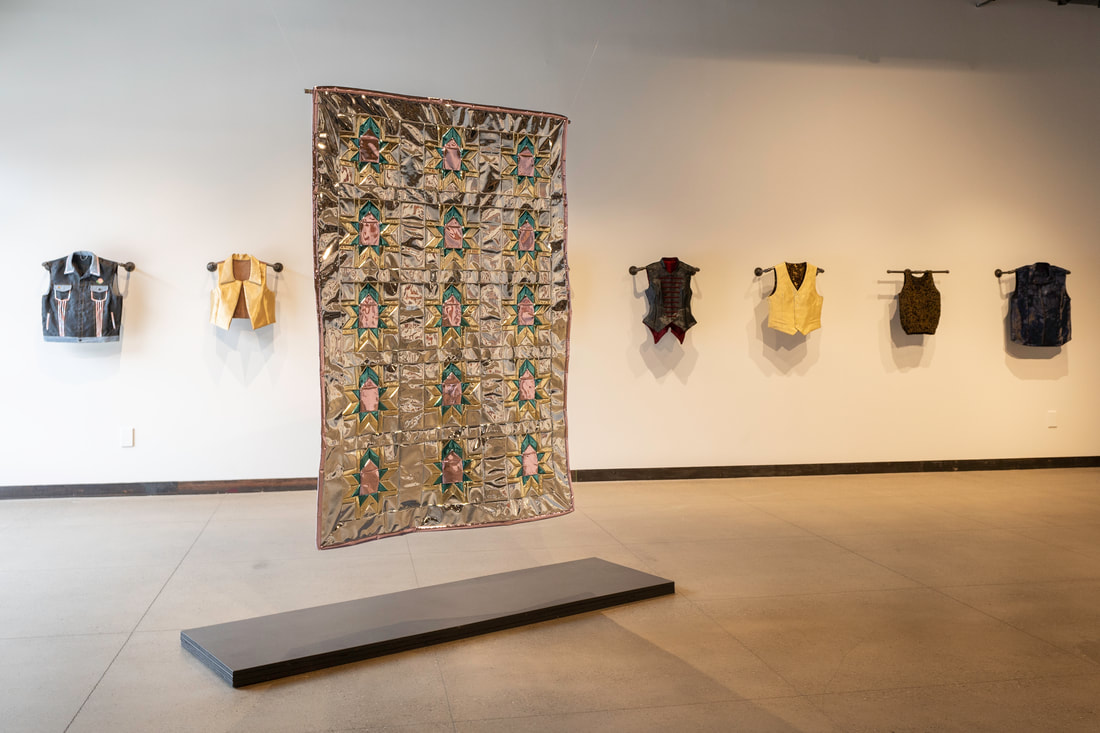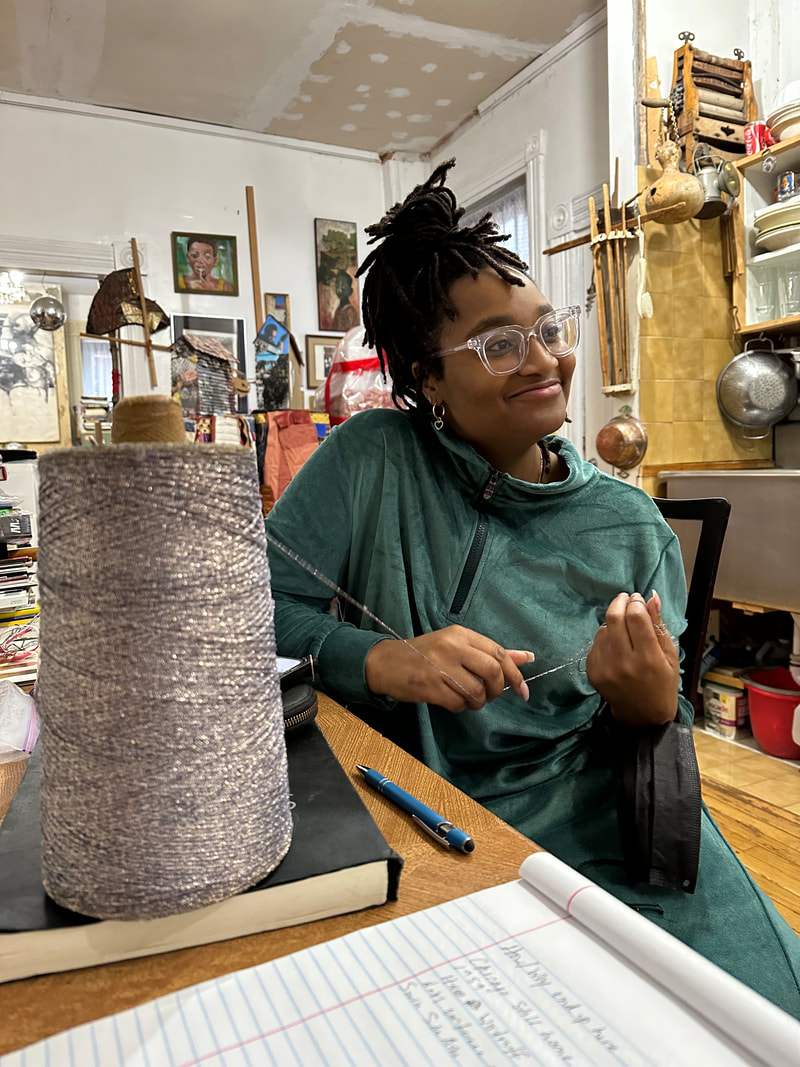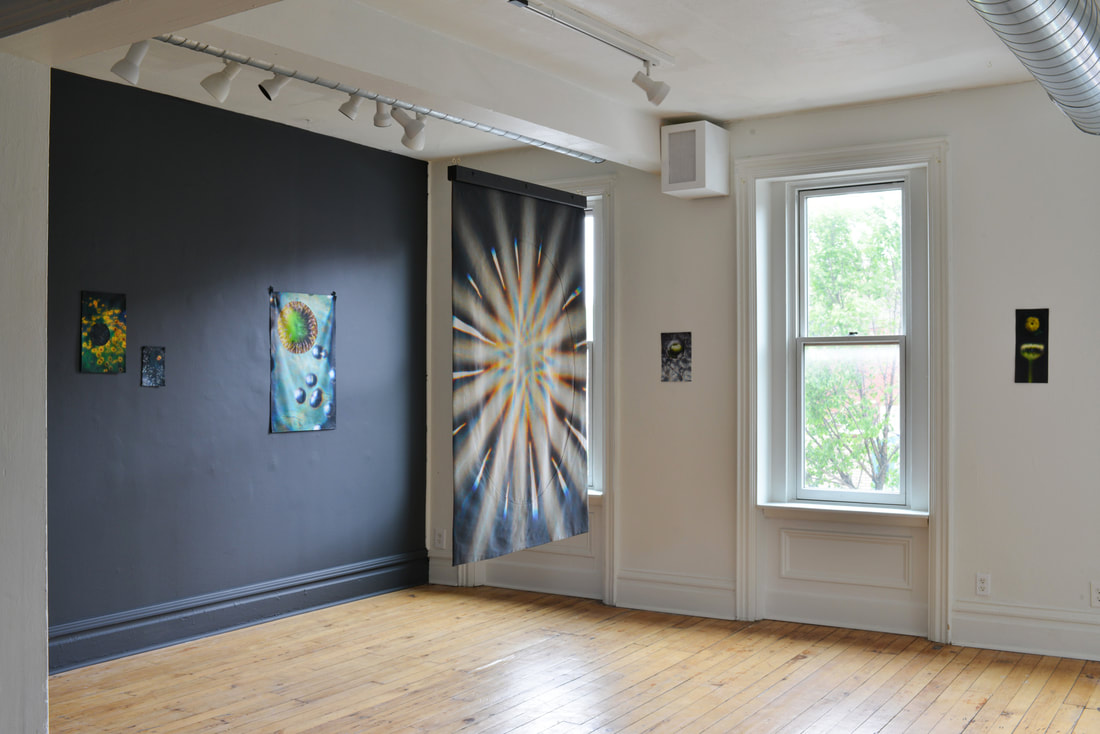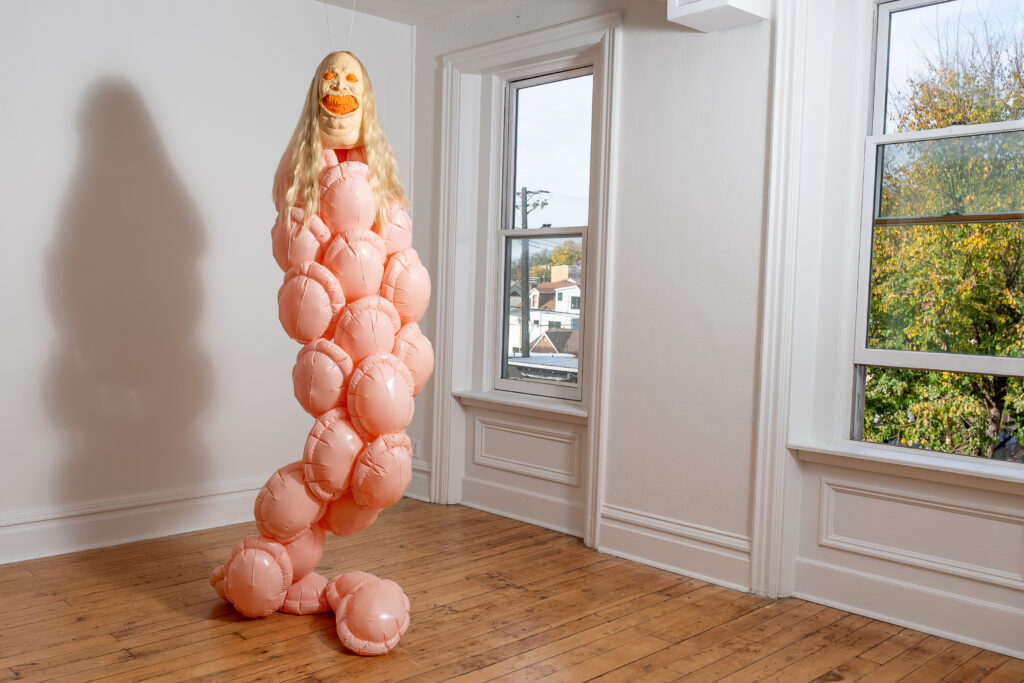
Canadian artist Zoë Schneider’s first American exhibit, The Whale, manipulated and repositioned items like fat suits, fat horror masks and inflatable prosthetic bellies to expose society’s fat bias and the objects’ implicit bigotry. Pittsburgh writer, advocate and sex worker Jessie Sage writes about how Schneider’s work impacted her.
In the exhibition guide for Zoë Schneider’s show The Whale—which was on display at Bunker Projects from Nov. 1 to Dec. 20, 2024 — Schneider says that “film and media tend to fail miserably in depicting well-rounded fat characters, generally utilizing fatness as a way to convey monstrosity, moral failure, or derision.”
Indeed, her show is a commentary on how fatness is represented in popular culture, and its title references the 2022 film of the same name in which the actor Brendan Fraser plays Charlie, a tragic figure in a fat suit. As I walked through the exhibit, I was struck by Schneider’s jarring commentary on the fat body as a site of monstrosity: the unnaturally twisted bodily comportment of some of the pieces; the glaringly, seemingly intentionally ugly fat masks and fat Halloween costumes; a short film in which Schneider herself pulls the stuffing from a fat clown suit and then puts the suit on over a leotard, filling it out with her own flesh, complete with a red clown nose.

Naming the exhibit after the movie The Whale is a poignant choice. In the film, Charlie eats himself to death. And while director Darren Aronofsky says he sees the film as “a beautiful story of empathy and human connection,” the audience is primed to judge Charlie for what he’s done to his body and his life. We don’t have to work hard to get there—we’re given the framework by Charlie’s estranged daughter, who hurls insults and judgment at him.
Schneider says that when films use straight-size actors to play fat characters, fat suits “ironically [flesh] out the actors physically but [render] them as flat, two-dimensional representations.” This is certainly true of the portrayal of fatness in The Whale movie. While there may have been a hint of redemption at the end of the film, everything that came before the main character’s death was, for lack of a better word, tragic.
“Fat costumes are artifacts that embody our culture’s continued anti-fat sentiment,” Schneider says. In other words, Aronofsky’s film is representative of a much larger cultural anxiety about fatness.
This fear of fatness, its monstrosity, is something that Roxanne Gay points to in a New York Times opinion piece about The Whale. “We’ll hear about how brave Mr. Fraser is for taking on a role like this, for wearing a fat suit, for being willing to embody so many people’s worst fears,” Gay writes. And yet, she continues, “the onscreen portrayal of fatness bears little resemblance to the lived experiences of fat people.”
Reading Gay’s commentary reminded me of interviewing fat sex worker Ramona Flour for a podcast, who told me, “Fat people aren’t afraid of being fat. Skinny people are afraid of being fat.” The trouble with depictions of fatness that come from straight-sized actors, directors, and artists is that they strip fat bodies of their dimensionality (reducing them to comedy, monstrosity, or tragedy) while simultaneously imbuing them with anxiety and fear that has nothing to do with fat people themselves.
Gay pulls no punches in her review of The Whale, writing, “How this film deals with Charlie’s fatness is egregious: exploitative and at times cruel.” With the same loathing that Schneider interacts with depictions of fatness in popular media, she adds, “I am not sure if it is discomfort that makes me feel this way or if the depiction of Charlie hit too close to home. I’m not able to create any kind of intellectual distance, as is my right. We bring who we are to the art we consume.”
Indeed, as a fat sex worker whose body is heavily scrutinized and politicized, I could not walk through the exhibit without thinking of the ways my own body has been the site of fetishization, praise, derision, and fear.
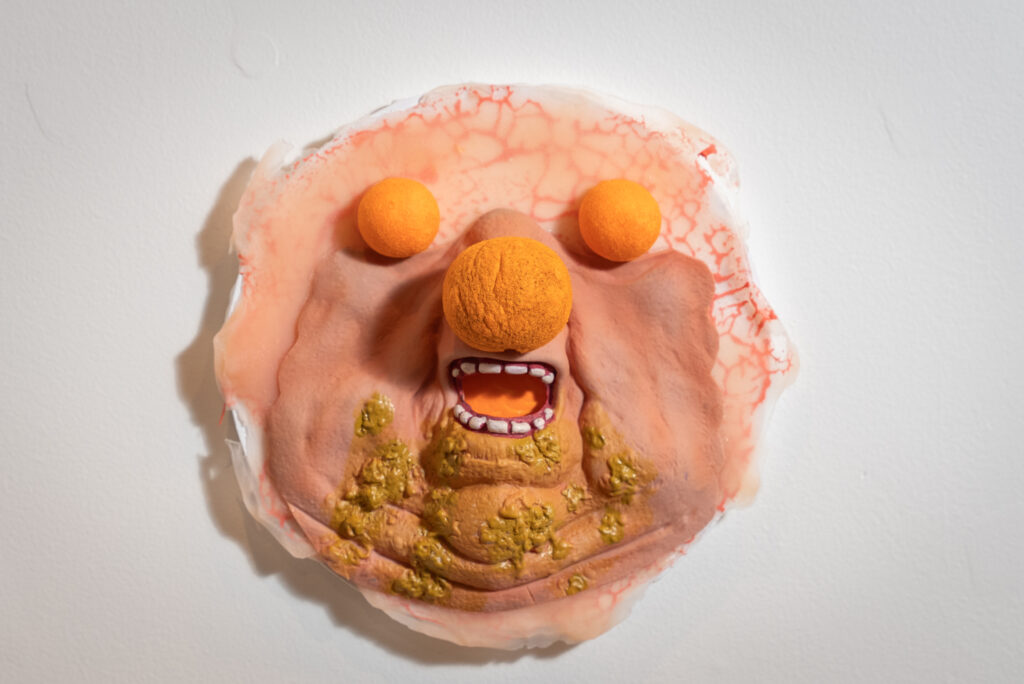
“From the perspective of a fat person, I can barely look at [fat suits]. I loathe to touch them,” Schneider says. “But as an artist, I want deeply to engage with these objects that are ripe with blunt and brutal meaning.”
Her show succeeds in this respect. One of the first pieces I noticed as I walked into the gallery was a twisted and mangled fat body with lips all over it. Certainly, you could read this as an allusion to the insatiable hunger that fat folks are believed to have—our mouths always ready to be stuffed. But as a sex worker, I could not help but feel those lips all over my body: I am not the one who consumes, I am the one who is consumed.
The erotic has a way of transforming our fears and anxieties into objects of secret desire and fantasy. Any fat sex worker will tell you that thin clients who only date and marry thin partners come to us to devour our bodies with a hunger that can only be matched by its correlative shame. I’ve had men rub my belly and bury their faces in my thighs with an abandon they don’t want anyone else to know about.
When well-meaning fans reach out to tell me they appreciate my writing because I am brave enough to do it as a fat woman, I’m reminded of the way that my body stands in the way of my work. The size of my body never feels like the most salient thing I write about, but it is a thing that many people can’t see around—the sort of two-dimensional flattening that Schneider refers to.
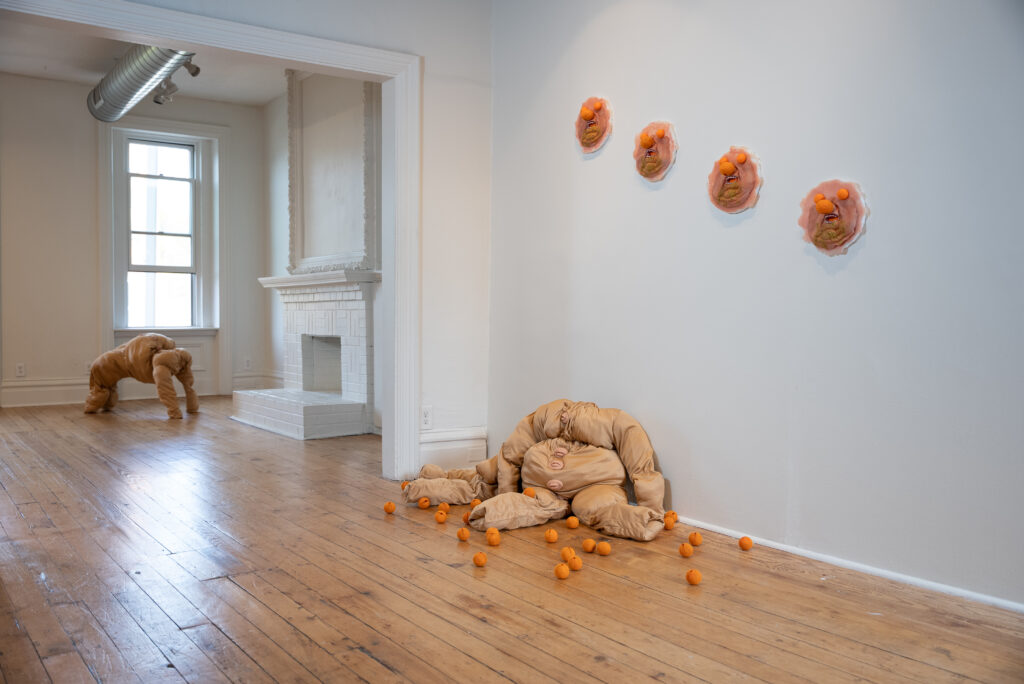
The piece in Schneider’s exhibit that made me pause the longest was the video of Schneider herself pulling all the stuffing from a Halloween fat suit, only to fill it out with her own body. It reminded me of a time when my partner was doing a photo shoot with me and a thin sex worker who’s also a friend. The other woman didn’t bring enough sexy clothes with her and wanted to wear mine. She borrowed a corset and even with it laced up to its tightest settings, I had to stuff the back with hotel towels to make it look like it fit her. (While Schneider pulled her stuffing out, I put it in.) Meanwhile, my thin friend—who once told me that my body is her vision of feminine beauty, albeit beauty she is herself too afraid to inhabit—dressed up as a voluptuous woman, the very person she was afraid to become.
I’ve created other content with thin sex workers only to have them ultimately be too afraid to put it out because of their body dysmorphia. Once, I did a scene with a woman who must weigh 80-100 pounds less than me, only to have her tell me to hold the release of the clip because she was struggling with how fat she looked in the film. She didn’t give any thought to how her feelings about her own body implicated mine.
As someone who labors with her body and depends on its desirability for my livelihood, Schneider’s exhibit was hard to stomach. It reminded me that, while certainly there are some clients and fans who have unconflicted feelings about their desire for me, there are a great number of others who view my body through the lens pop culture has given us to view fatness: comedy, monstrosity, tragedy. I can feel in the way that they touch me and interact with my folds and rolls that they are trying to make sense of their fear. Once, a client told me it was a valuable experience for him to see how I own my body and refuse to apologize for it. It had not occurred to me to make excuses for a body he desired enough to spend more than $1,000 interacting with.
I’m grateful that artists like Schneider engage with the artifacts that shape our cultural imagination about fatness. Her exhibit helped me make sense of the way that my body has been politicized, critiqued, and fetishized, too. Hopefully, pushing our cultural notions to their outer limits pushes folks to think about the impacts of fatphobia.
Pittsburgh-based sex worker, writer and advocate Jessie Sage writes Pillow Talk with Jessie Sage, a weekly column for the Pittsburgh City Paper that covers sexuality, gender, sexual and body politics, sex workers’ rights, and more. She is the creator and host of When We’re Not Hustling, a weekly podcast that explores the lives and identities of sex workers outside of their work personas. She founded the Pittsburgh chapter of the Sex Worker Outreach Project (SWOP), has been quoted in HuffPost, VICE, Buzzfeed, Psychology Today, Mel Magazine, Salon, Kinkly, Reason, LifeHacker, Salon, Wired, The New York Post, Rolling Stone, Forbes, Healthline, Hustler, The Appeal and more; and her op-eds have appeared in The Washington Post, VICE, Buzzfeed, The Daily Beast, Kinkly and Hustler. She has been a contributing author in two sex work anthologies, We Too: Essays on Sex Work and Survival and The Holy Hour: An Anthology on Sex Work, Magic, and the Divine, and has spoken about sex work, labor, and sex work policy at Carnegie Mellon University, the University of Pittsburgh, Penn State University, Duquesne University School of Law, Chatham University and the University of Nevada, Las Vegas.

